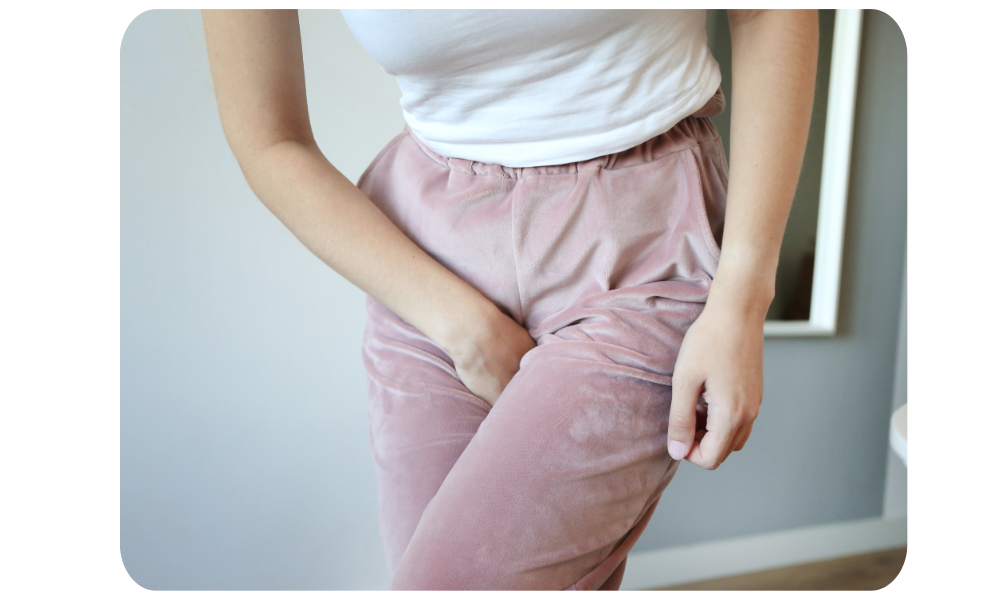Urinary urgency and frequency are common concerns, yet many myths surround bladder health. We often hear misconceptions that can lead to confusion, so I’m here to separate fact from fiction and help you better understand how your bladder truly functions!
Myth #1: Needing to pee frequently means you’re just drinking too much water.
Fact: While hydration plays a role in bladder function, excessive urinary frequency can be a sign of an underlying issue such as bladder irritation, pelvic floor dysfunction, or an overactive bladder. It’s important to assess patterns and other contributing factors rather than assuming it’s solely due to water intake.
Myth #2: Holding your urine for long periods strengthens your bladder.
Fact: Regularly delaying urination can actually overstretch the bladder and lead to dysfunction. A healthy bladder should be emptied every 2.5 to 4 hours during the day. Consistently ignoring the urge can lead to issues like urinary retention or increased urgency over time.
Myth #3: Waking up at night to urinate is normal with aging.
Fact: While occasional nighttime urination (nocturia) is common, frequent trips to the bathroom at night may indicate an overactive bladder, poor bladder habits, or even underlying conditions like sleep apnea or hormonal imbalances. Addressing hydration timing and bladder training can help reduce nighttime disturbances.
Myth #4: Kegels are the answer to all bladder problems.
Fact: While strengthening the pelvic floor muscles with Kegels can help some people, they are not a one-size-fits-all solution. In fact, many people with urinary urgency and frequency actually have tight or overactive pelvic floor muscles, which need relaxation rather than strengthening. Consulting a pelvic floor physical therapist can help determine the right approach.
Myth #5: Caffeine and alcohol don’t really affect bladder health.
Fact: Both caffeine and alcohol act as diuretics and bladder irritants, which can increase urinary urgency and frequency. If you’re experiencing bladder issues, reducing or eliminating these substances may significantly improve symptoms.
Myth #6: It’s normal to have urinary urgency after childbirth or menopause.
Fact: While hormonal changes and childbirth can impact bladder function, urinary urgency and leakage are not something you have to live with. Pelvic floor physical therapy can help restore proper bladder control and improve quality of life at any stage.
Myth #7: If you experience leakage or urgency, medication or surgery is the only option.
Fact: Conservative treatments, such as lifestyle modifications, pelvic floor therapy, and dietary changes, can significantly improve bladder symptoms. Medications and surgical interventions should be considered only if conservative treatments fail.
The Problem with "Just in Case" Peeing
Many people develop the habit of urinating “just in case” before leaving the house or going to bed, even if they don’t feel the urge. While this may seem like a good way to prevent urgency, it can actually train the bladder to send signals more frequently, even when it’s not full. Over time, this can lead to an overactive bladder. Additionally, triggers like running water, key-in-the-door syndrome, or certain habits can contribute to unnecessary urgency. Learning to recognize and retrain these triggers with bladder training techniques can help restore proper bladder function.
How Often and How Much Should You Be Peeing?
A healthy bladder should empty approximately 5 to 7 times per day, with each void producing around 8 to 12 ounces (or about 250 to 350 milliliters) of urine. Ideally, urination should last about 8 to 12 seconds. If you find yourself going much more frequently with smaller amounts, or if your stream lasts only a few seconds, it may be a sign of an overactive bladder or poor bladder habits. Keeping track of your bathroom trips and fluid intake can help identify patterns and potential concerns.
Take Control of Your Bladder Health
If you’re struggling with urinary urgency or frequency, you don’t have to suffer in silence. A comprehensive approach, including pelvic floor physical therapy, lifestyle changes, and bladder retraining, can help restore normal function.
At Soma Vita Physio, we specialize in helping individuals regain bladder control and confidence. Schedule an appointment today to take the first step toward relief!




